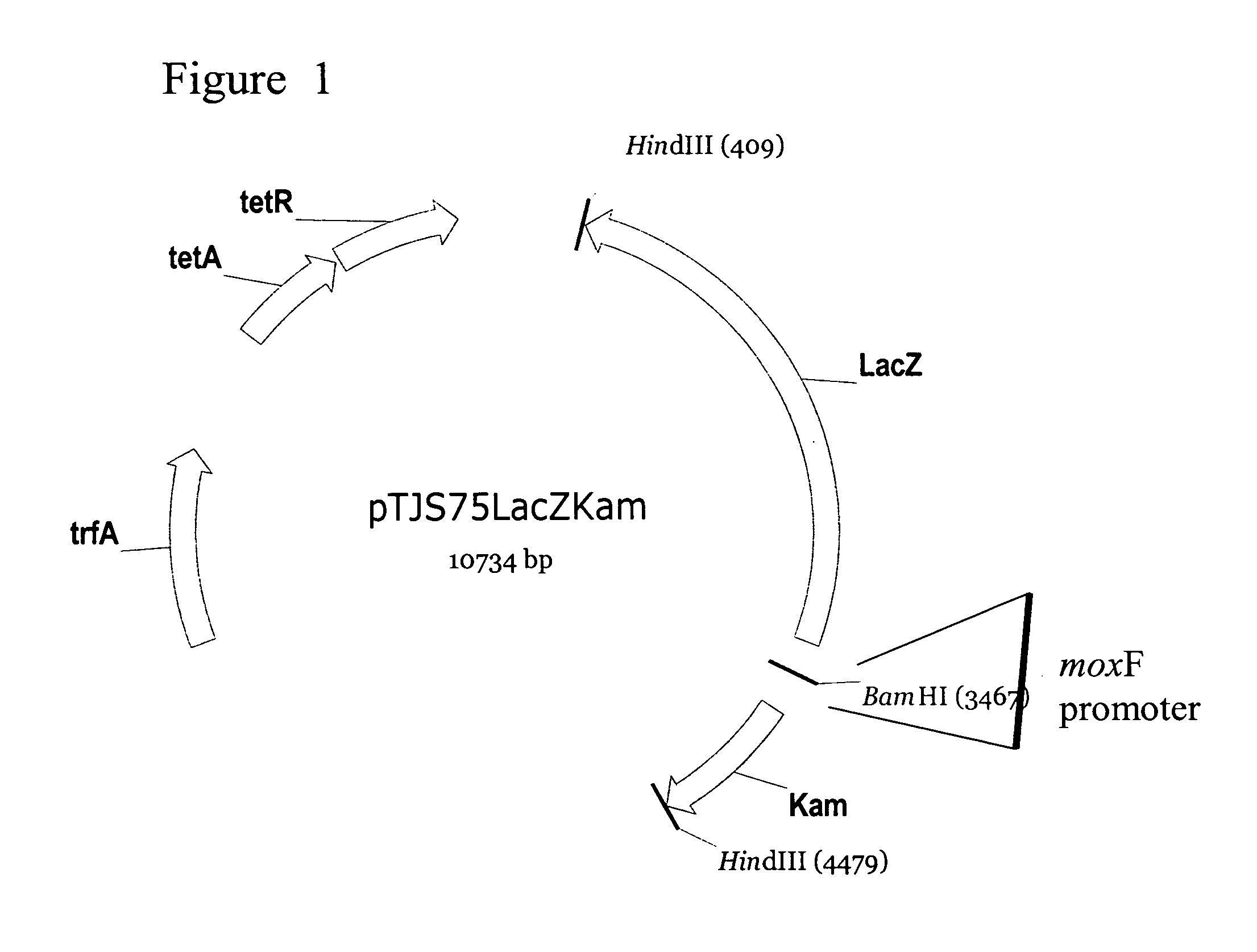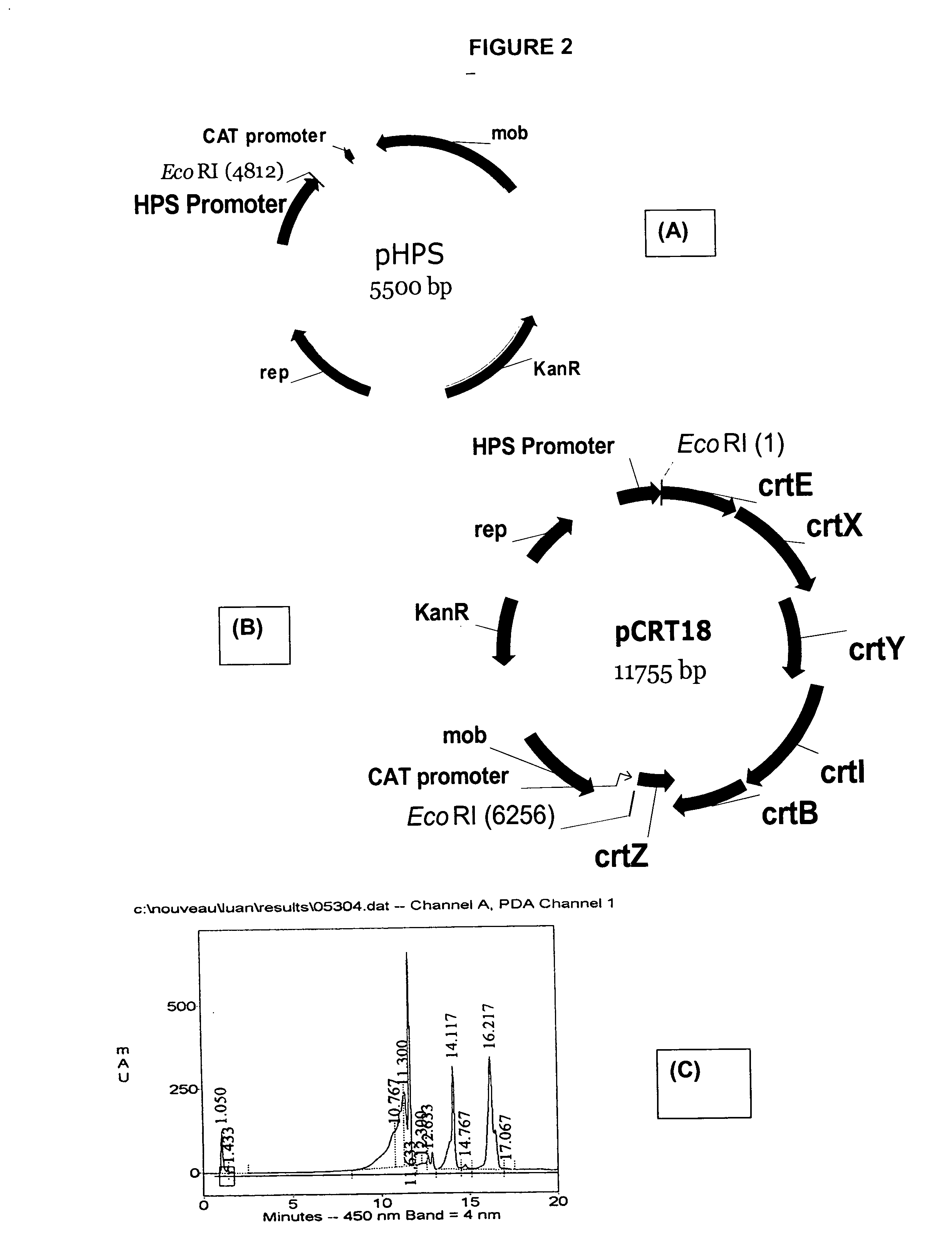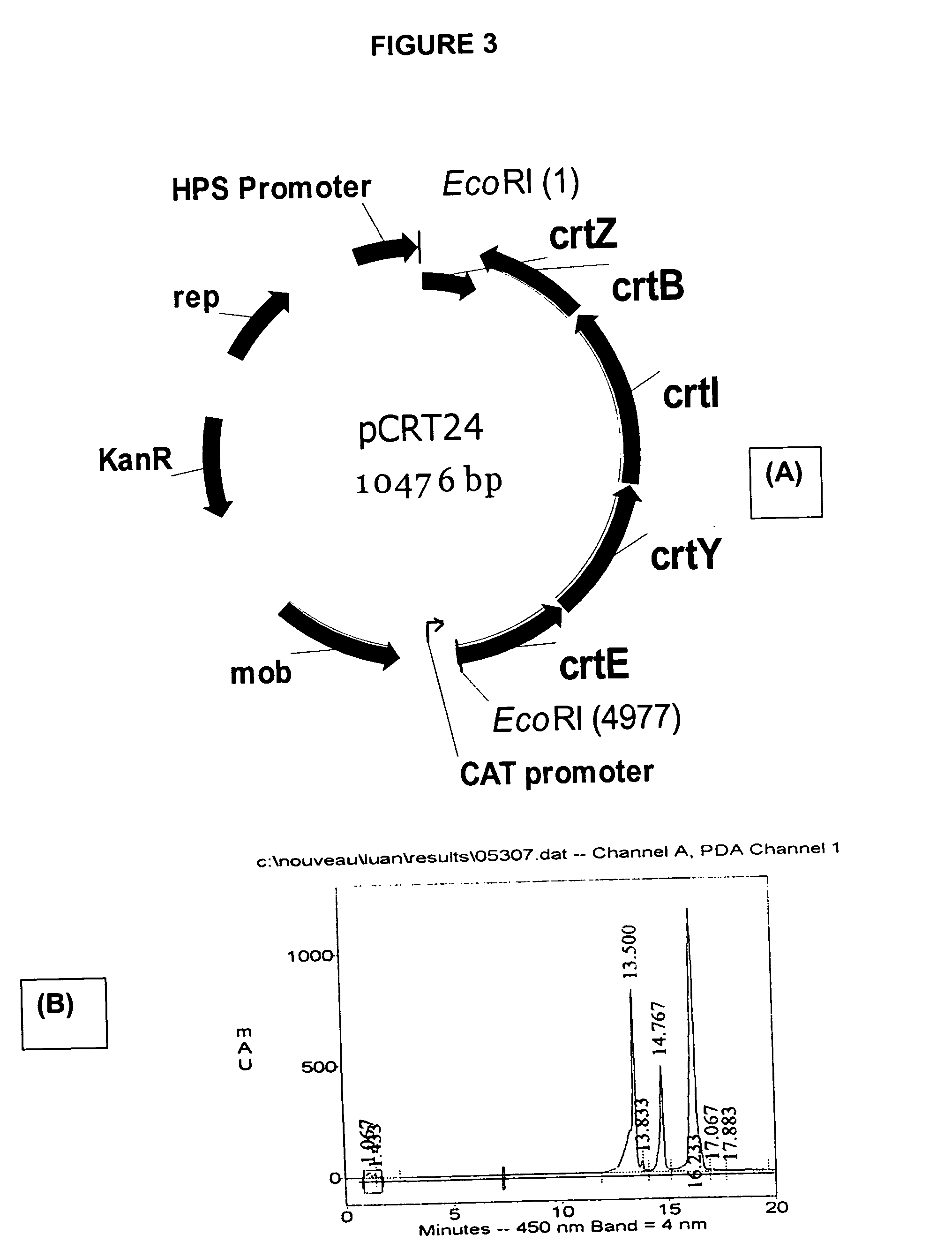Natural promoters for gene expression in C1 metabolizing bacteria
a technology of gene expression and promoters, which is applied in the direction of bacteria peptides, organic chemistry, peptide sources, etc., can solve the problems of economic production that cannot tolerate heavy bioprocessing costs, low product yields, and only mild commercial success of epoxidation of alkenes
- Summary
- Abstract
- Description
- Claims
- Application Information
AI Technical Summary
Problems solved by technology
Method used
Image
Examples
example 1
Growth of Methylomonas 16a
[0195] Example 1 summarizes the standard conditions used for growth of Methylomonas sp. 16a (ATCC# PTA-2402), as described in WO02 / 20728.
[0196] Methylomonas Strain and Culture Media.
[0197] The growth conditions described below were used throughout the experimental Examples for treatment of Methylomonas 16a, unless conditions were specifically mentioned to be otherwise.
[0198] Methylomonas 16a was grown in serum stoppered Wheaton bottles (Wheaton Scientific, Wheaton, Ill.) using a gas / liquid ratio of at least 8:1 (i.e. 20 mL of Nitrate liquid "BTZ-3" medium in 160 mL total volume). The standard gas phase for cultivation contained 25% methane in air, although methane concentrations could vary ranging from about 5-50% by volume of the culture headspace. These conditions comprise growth conditions and the cells are referred to as growing cells. In all cases, the cultures were grown at 30.degree. C. with constant shaking in a Lab-Line rotary shaker unless otherwi...
example 2
Construction of a DNA Microarray of the Methylomonas Genome
[0205] Example 2 describes the multi-step procedure required to create a DNA microarray of the Methylomonas genome. This array comprised 3750 ORFs, representing approximately 93% of the total genome of the organism. Also described are procedures for preparing probes, hybridizing probes to microarrays, and collecting the data generated.
[0206] Amplification of DNA Regions for the Construction of DNA Microarrays
[0207] Specific primer pairs were used in PCR reactions to amplify the DNA sequence of each protein encoding ORF of Methylomonas sp. 16a. Primers were designed based on the 5' and 3' sequences of each ORF by methods well known by one skilled in the art. Genomic DNA (10-30 ng) was used as the template. Genomic DNA was prepared using the Fast DNA Kit (Bio 101; Carlsbad, Calif.). The PCR reactions were performed in the presence of HotStart Taq.TM. DNA polymerase (Qiagen, Valencia, Calif.) and the dNTPs (Gibco / BRL). Thirty-f...
example 3
Identification of Nitrate Induced DNA Regions in Methylomonas
[0220] Using a Methylomonas DNA microarray prepared according to the methods described in Example 2, Applicants identified two nitrate inducible genes. The promoters of these genes can be employed for directing chimeric gene expression in Methylomonas and other C1 metabolizing bacteria, in response to nitrate. This Example describes the identification of these nitrate inducible genes and their deduced promoter regions.
[0221] Specifically, Methylomonas sp. 16a was grown at 30.degree. C. in BTZ-3 medium with either 10 mM ammonium chloride or 10 mM sodium nitrate as the nitrogen source. Cultures (typically 20 ml)at exponential phase (OD.sub.660=0.3) were harvested for RNA isolation. Total RNA was isolated, labeled with fluorescent dyes, and used as probe on microarrays as described in Example 2. To identify genes specifically induced in the presence of nitrate, microarray hybridization experiments using probes made from RNA s...
PUM
| Property | Measurement | Unit |
|---|---|---|
| temperature | aaaaa | aaaaa |
| temperature | aaaaa | aaaaa |
| temperature | aaaaa | aaaaa |
Abstract
Description
Claims
Application Information
 Login to View More
Login to View More - R&D
- Intellectual Property
- Life Sciences
- Materials
- Tech Scout
- Unparalleled Data Quality
- Higher Quality Content
- 60% Fewer Hallucinations
Browse by: Latest US Patents, China's latest patents, Technical Efficacy Thesaurus, Application Domain, Technology Topic, Popular Technical Reports.
© 2025 PatSnap. All rights reserved.Legal|Privacy policy|Modern Slavery Act Transparency Statement|Sitemap|About US| Contact US: help@patsnap.com



